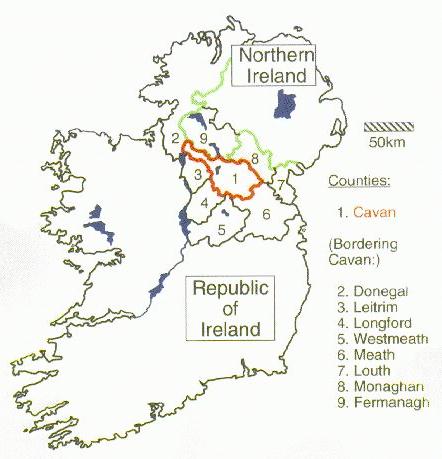A folly is commonly known as a building having no purpose. Yet an architectural scholar would argue that such seemingly strange and useless buildings – ranging from garden gazebos, ‘sham’ ruins, and elaborate Grecian/Romanesque temples – had varieties of purposes: for example, banqueting, contemplation, and provision of work for famine relief (Howley 1993:2). Ireland has many such structures (see Howley’s excellent study). The impetus for Irish landowners to build seemingly eccentric structures, or follies, was received from 18th-century England, particularly in the Romantic period during which the landscape was being artistically molded (by those who could afford to be romantic) under a naturalist ideology that also influenced literature and painting (Howley 1993:4).

Howley discusses several types of Irish architecture that were integrated into gardens and other places – grottoes, ‘hermit’ lodges, obelisks, temples, etc., but the kind most applicable to Fleming’s Folly were well represented – fake ruins, sham forts, and the most common of all follies, towers (Howley 1993:48). “The attraction of towers to landowners is...an obvious one, as there is no better way to survey one’s estate or display it to others than from a high vantage point of one’s own creation” (Howley 1993:50). Similarly, a tower whose visage watches over the land you till (but do not own!) is a continual reminder of the class of people extracting your labour to good profit. The ballad and folklore presented below record some of the voices of the people on this subject.
The tower, locally named Fleming’s Folly, and also so named on the Irish Ordinance Survey maps, sits on a hill-top in the town of Ballinagh, County Cavan.


 Left to right: the folly in its landscape setting; close-up of the folly; sketches of the folly. Click on the thumbnails for full versions.
Left to right: the folly in its landscape setting; close-up of the folly; sketches of the folly. Click on the thumbnails for full versions.
The tower is made of roughly masoned stonework and stands about 10 meters high and 12 meters wide (I lacked a measuring tape, so I judged these dimensions by eye). About 15 meters northeast of the tower is a shallow pond approximately 10 by 5 meters in dimension and filled with stagnant water. An informant told me that this is the hole from which the dirt was dug to make mortar for the tower. Howley supplies a photograph taken from about a third of a kilometer away in Ballinagh, a drawing, ground plan (without measurements), and this description:
Fleming’s Folly, near the town of Ballinagh, Co. Cavan, is an interesting if somewhat ambiguous example of a sham ruin. Although its present state is certainly ruinous, it is not at all clear if it was originally conceived as such. It stands on an imposing gorse- and fern-covered hill with several rough outcrops of rock, in contrast to the more gentle drumlin hills which surround it ... . The building is a square-planned structure which seems almost cubic in form, although its height is substantially less than the length of its side... . Two main openings, now much eroded, appear in the jagged rubble-stone walls. One seems to have been a window and the other a doorway. On two sides of the square the walls are massive, in excess of six feet thick, and one contains a staircase leading from the doorway up to a rough platform comprising the second of the two thick walls. There is no evidence of any roof, although the interior contains what appears to be a rough fireplace and two deep storage recesses in one of the walls. ...
Local accounts relate that Fleming’s Folly was once a much higher, tower-like structure, from the top of which ships could be seen at sea. No evidence survives to support this, and it is highly probable that its present state may be a lot closer to the original than the more fanciful legend would have us believe. There is, however, an interesting similarity in the plan of Fleming’s Folly to those of the tower houses at Ballyhowley, Co. Mayo, and Rathmacknee, Co. Wexford... . These defensive houses from the fifteenth or sixteenth century both have similar staircases, wall recesses, and roughly similar-shaped plans. It is therefore possible that Mr. Fleming built his folly in imitation of this earlier Irish tower house and the puzzle of whether or not it was purposely conceived as a ruin is unlikely to be solved. (Howley 1993:111-112).
The Fleming family was originally a Norman family that fought alongside William the Conqueror and later was awarded lands around Slane in Ireland (Fitzsimons 1975:66). They came to Cavan with other land-owning families of the English Pale (esp. the Plunketts and Nugents; Duffy 1995:17). Branches of the family settled in Meath, Monaghan, and, notably, Cavan, although the name occurs throughout the country (MacLysaght 1964:84.). I have not yet located specific information concerning the Fleming who built the Folly. However, we do know (1) the Fleming family was awarded land in Cavan during the 17th century land grants of the Cromwellian regime, and (2) the ballad gives Fleming the title of “Captain,” and a “Major-General” Fleming did own estates in the Ballinagh area in the mid-19th century; he was apparently an absentee landlord (Duffy 1995:25, Fig. 6, and 26, Fig. 7).
© Wade Tarzia 1997
© assemblage 1997